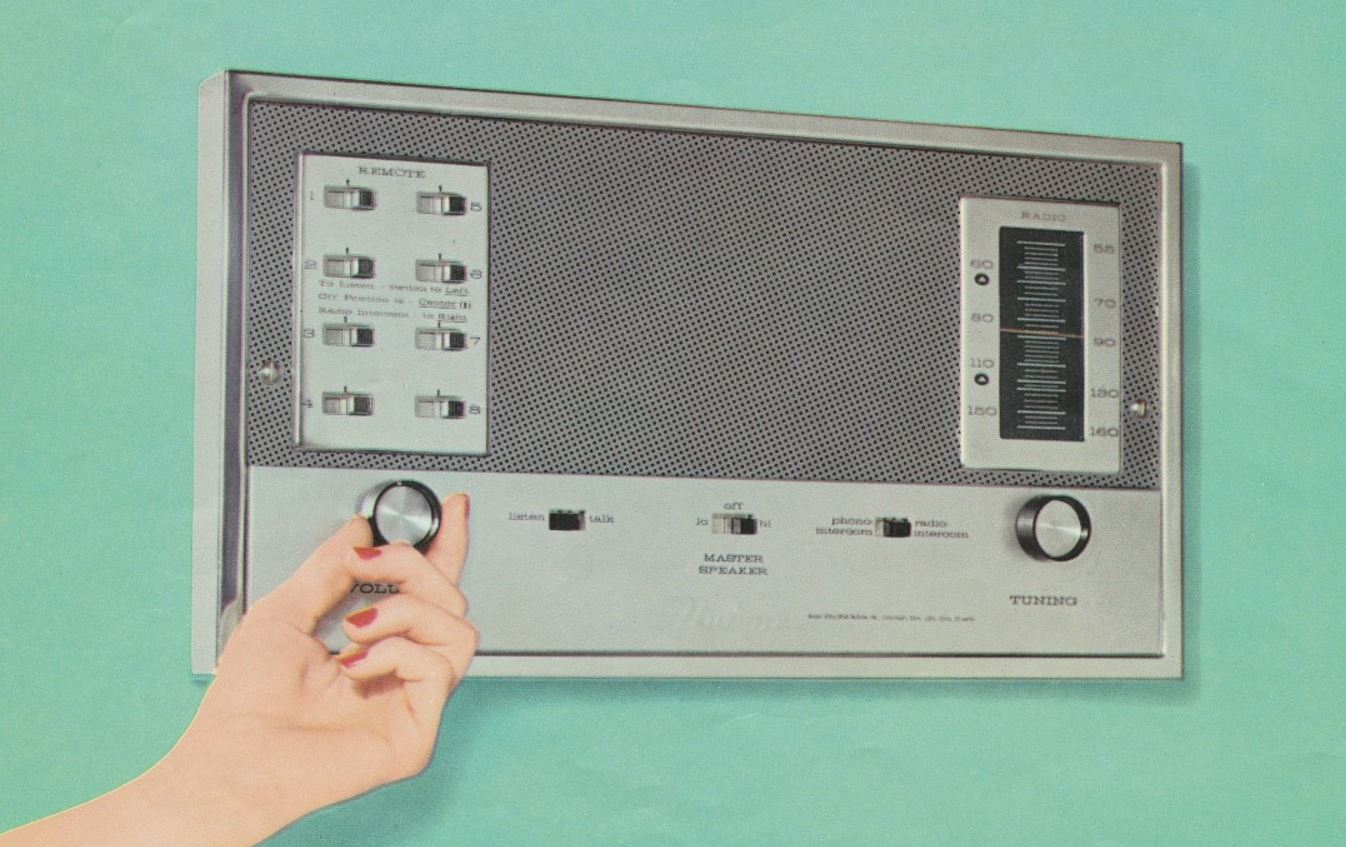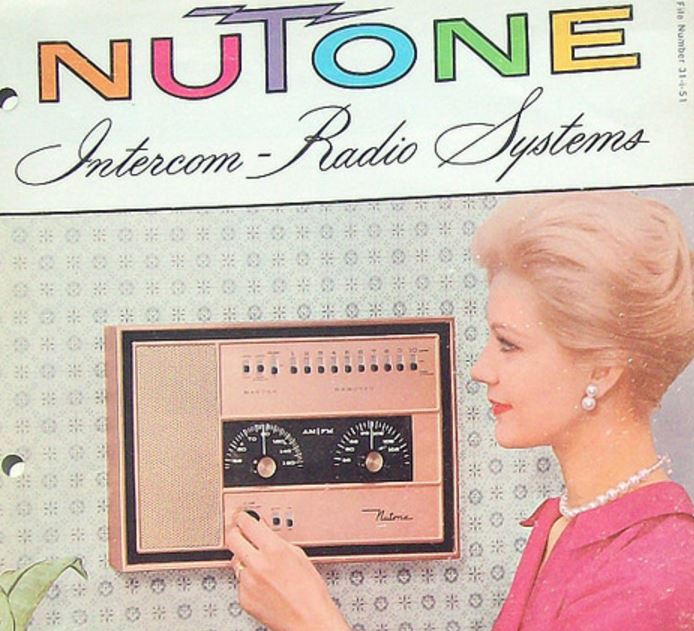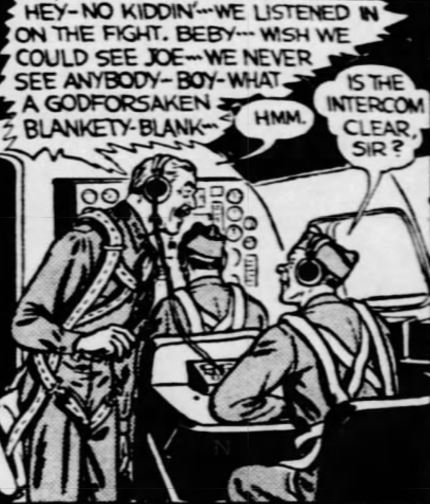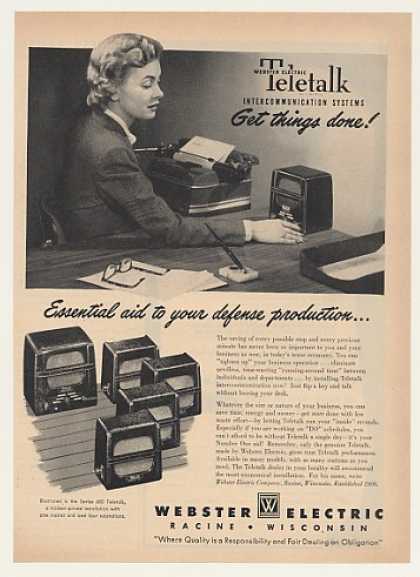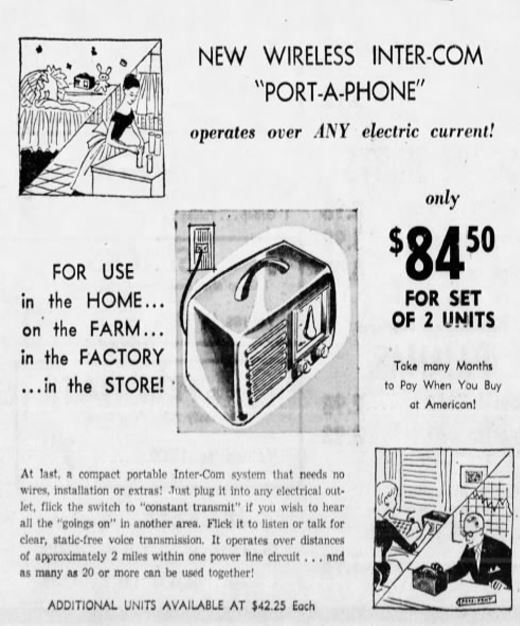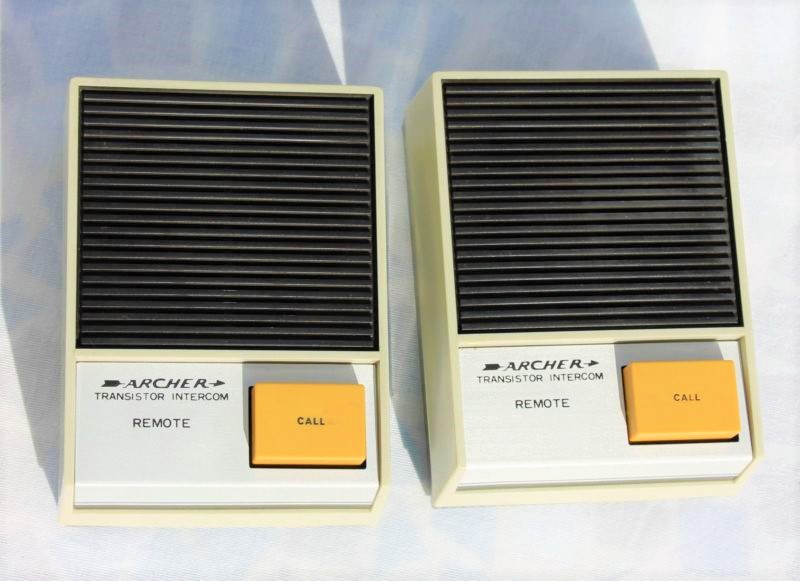
Remember the great age of home intercoms? I don’t either!
That’s because in the 1960s and 1970s, home intercoms were not found in your typical suburban house. Unless your family were “people of means,” as your Mom or Dad might have referred to your rich neighbors, you didn’t have one–sadly enough. Those neighbors with the sprawling, picture-perfect mid-century modern house with a pool and shag-covered conversation pit did have an intercom.
At the heart of it, an intercom is a house phone. It differs from a phone in that it has no handset. In many cases, the connection can be opened up without having to activate any controls. What this means is that Mom, in the kitchen, can can use the intercom to squawk “Time for dinner” to the kids in back of the house, without the kids having to pick up any bothersome handset (because they would ignore it, anyway).
Military and Industrial Roots
The term “intercom” first began appearing around World War II, but usually in a military or industrial setting–not the residential intercoms we tend to think of. Bombers had intercoms so that crew members could communicate across the length of the plane.
Teletalk billed itself as an “intercommunication system” for offices:
Intercoms in Homes, 1960s Onward
Wired and wireless intercoms began appearing in U.S. homes in the mid 1950s.
By the 1960s, real estate ads began listing intercoms as a house feature, along with pool and shag and other luxuries. This NuTone intercom from 1963 is fairly typical of a permanent, hard-wired system in that it came fully loaded multi-station functions and an AM/FM radio.
